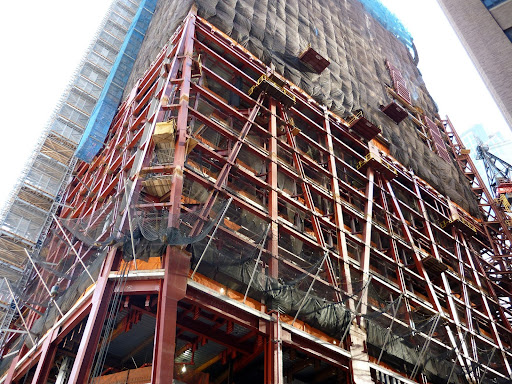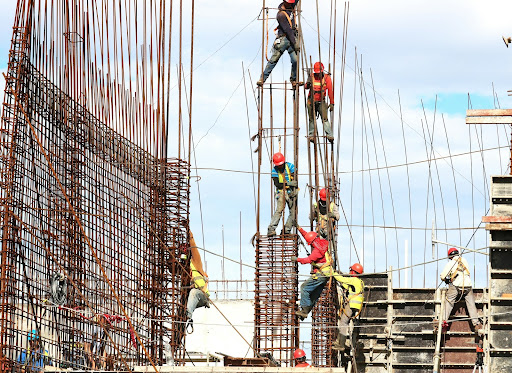
Construction projects are complex undertakings that involve multiple parties, various processes, and meticulous attention to detail. In the realm of construction, the presence of defects can be a significant concern, with latent defects being a particular area of focus. Latent defects in construction refer to issues that are not immediately apparent or visible, yet they can have far-reaching implications on the quality and safety of a structure.
What are Latent Defects in Construction?
Latent defects in construction are faults or flaws within a building or structure that are hidden or not readily observable during the construction phase or upon completion. These defects can stem from various sources, including design errors, poor workmanship, or subpar materials. Unlike patent defects, which are apparent and visible, latent defects may remain concealed for an extended period, only surfacing after the completion of the project.
The defining characteristic of latent defects is their hidden nature, making them challenging to detect through routine inspections or assessments. These defects may compromise the structural integrity of a building, posing safety risks to occupants and requiring costly repairs or remediation.
Examples of Common Latent Defects in Construction
Common types of latent defects in construction include issues such as inadequate waterproofing, faulty electrical wiring, structural instability, or hidden mould growth. These defects can have serious implications for the longevity and performance of a building, impacting both its aesthetic appeal and functionality.
Other common types of latent defects in construction include issues with the building’s ventilation system, poor insulation leading to energy inefficiency, inadequate fire safety measures, and problems with the plumbing or sewer systems. These defects may not be immediately apparent and can go undetected for years, causing extensive damage and costly repairs down the line.

Additionally, defects in the materials used for construction, such as substandard concrete or faulty roofing materials, can also lead to latent defects that compromise the structural integrity and safety of the building.
The presence of latent defects can lead to disputes between parties involved in the construction process, result in delays in project completion, and incur additional costs for rectification. Moreover, latent defects may pose risks to the health and safety of occupants, necessitating thorough assessments and timely interventions to address underlying issues.
Understanding Construction Contracts and Latent Defects
Construction contracts play a crucial role in governing the relationship between stakeholders in a construction project and establishing their respective rights and obligations. When it comes to latent defects, the inclusion of specific clauses in construction contracts is essential to allocate responsibilities and liabilities in the event of defect discovery.
Construction contracts typically contain provisions that address the treatment of latent defects, outlining the procedures for identifying, documenting, and rectifying such issues. These clauses serve to protect parties from unforeseen liabilities and disputes that may arise due to latent defects.
Parties involved in a construction project, including contractors, subcontractors, and designers, may be held liable for latent defects as stipulated in the construction contract. The contractually defined defect liability period sets forth the time frame during which parties are responsible for addressing latent defects that come to light after project completion.
What is the Difference Between Between Latent and Patent Defects in Construction

It is essential to distinguish between latent and patent defects in construction, as they entail distinct implications for liability and rectification.
Patent defects are defects that are visible or apparent upon reasonable inspection, and are typically detected during or shortly after the construction process. These defects are the responsibility of the contractor or builder, and they must rectify them promptly to ensure the project meets the required standards and regulations.
On the other hand, latent defects are not immediately apparent and may not surface until years after the completion of the construction project. These defects can be caused by poor workmanship, inferior materials, or unforeseen issues such as soil movement or structural issues. Identifying and addressing latent defects can be challenging, as they may require invasive investigation and specialised expertise to diagnose and rectify.
In terms of liability, contractors and builders are generally held responsible for patent defects, as they are expected to deliver a construction project that meets certain quality standards. However, the liability for latent defects may be more complex, as they may not be discovered until after the contractor’s warranty period has expired. In such cases, legal action may be required to determine liability and seek compensation for rectification.
Identifying and Addressing Latent Defects
Effective management of latent defects in construction requires a proactive approach to inspections, diligent monitoring of construction processes, and swift action in response to identified issues. Timely intervention is key to mitigating the impact of latent defects and ensuring the long-term durability of the built environment.
Regular inspections carried out by qualified professionals play a crucial role in detecting latent defects early on, enabling timely interventions to rectify issues before they escalate. Thorough assessments of structural elements, building systems, and material quality are essential to identifying potential latent defects.
Upon discovering latent defects in a construction project, stakeholders must take prompt and decisive actions to rectify the issues. This may involve engaging specialists, conducting in-depth investigations, and implementing remedial measures to address the root causes of the defects and prevent recurrence.
Subcontractors play a significant role in the construction process and bear responsibilities for addressing latent defects within their scope of work. Collaborative efforts among subcontractors, contractors, and project owners are essential to ensure that latent defects are promptly identified and resolved in a coordinated manner.
Legal Aspects and Liable Parties for Latent Defects

The legal framework surrounding latent defects in construction projects determines the contractual obligations, liability periods, and potential economic consequences for parties involved. Understanding the legal aspects of latent defects is crucial for safeguarding the interests of stakeholders and mitigating risks associated with construction liabilities.
Construction contracts specify the obligations of parties regarding latent defects, including the duration of the defect liability period during which contractors may be held accountable for rectifying latent defects. Clarifying contractual terms related to latent defects is essential to avoid ambiguity and ensure timely resolution of issues.
Warranties provided by contractors or manufacturers may offer coverage for latent defects, providing recourse for property owners in case latent defects manifest post-construction. Awareness of warranty terms and conditions pertaining to latent defects can help mitigate financial risks and facilitate efficient defect resolution processes.
The occurrence of latent defects in construction projects can result in substantial economic losses stemming from repair expenses, legal disputes, and reputational damage. Negligence in addressing latent defects promptly and effectively can exacerbate financial liabilities and impact the overall success of the construction project.
This is Why You Need Latent Defects Insurance
Latent defects insurance can provide coverage for costs associated with addressing such issues, as well as legal fees in case of a breach of contract. Without this insurance, a construction contractor may be liable for structural defects, plumbing defects, or defects in the design that only become apparent after the limitation period has passed.
Latent defects insurance can help protect contractors and developers from costly legal battles and repairs that may arise from hidden defects in a property. This type of insurance typically covers the cost of repairing or replacing faulty workmanship, materials, or design flaws that were not reasonably detectable at the time of construction.
In addition, latent defects insurance can also cover the cost of alternative accommodation or loss of rental income if a property becomes uninhabitable due to a latent defect. This can help mitigate financial losses for property owners and provide peace of mind knowing that they are protected in case unforeseen issues arise.
By having this coverage in place, contractors and developers can avoid costly disputes and legal battles that can arise from latent defects and ensure the long-term success and durability of their construction projects.
Preventing Latent Defects in Construction Projects

Preventive measures play a vital role in mitigating the risks associated with latent defects and ensuring the quality and integrity of construction projects. By prioritising quality workmanship, exercising due diligence, and addressing foundational concerns, stakeholders can proactively prevent latent defects from undermining the success of their projects.
Quality workmanship is fundamental to the prevention of latent defects, as skilled craftsmanship and adherence to industry standards contribute to the structural soundness and resilience of buildings. Attention to detail, precision in construction techniques, and use of high-quality materials are essential for minimising the occurrence of latent defects.
Exercising reasonable care and due diligence throughout the construction process is paramount in identifying and addressing latent defects before they escalate into major issues. By implementing robust quality control measures, adhering to best practices, and engaging competent professionals, stakeholders can uphold standards of excellence in construction projects.
The foundation serves as the backbone of any structure, and addressing concerns related to inadequate foundation design or construction is crucial in preventing latent defects. Proper site investigations, engineering assessments, and structural reinforcements can enhance the stability and longevity of buildings, reducing the likelihood of latent defects arising in the future.
Contact Us Today For Your Latent Defects Insurance

If you need insurance for hidden problems in your building, reach out to HMD Insurance now. We can help protect you from unexpected issues that may arise later. Our team is ready to assist you with latent defects insurance, so you can have peace of mind about your property. Don’t wait, contact us today to learn more and secure your coverage.
At HMD Insurance, we understand the importance of safeguarding your investment. Latent defects insurance is a smart way to prepare for any hidden faults that could affect your property. By contacting us now, you can take the first step towards ensuring your building is well-protected. Trust HMD Insurance for reliable latent defects insurance solutions.
FAQ's
A: Latent defects are defects in construction work that are not apparent during construction or upon practical completion, but are discovered years after construction due to defects in workmanship or materials.
A: One example of a latent defect is a construction defect that occurs when owners and contractors miscalculate the cost of correction. This can lead to a latent defect manifesting itself after the project is delivered, causing property damage that the owner may be liable for damages.
A: The latent defects period can vary, but it is typically between 5-10 years. This period refers to the time during which hidden or unknown issues in a building may be discovered and covered by the latent defects insurance policy. The latent defect is a defect that occurs over time and is not apparent at the time the defect occurs.
A: Latent defects are defects that are not apparent during construction, while apparent defects are visible or detectable during construction or upon practical completion.
A: Parties that could be held liable for latent defects in construction include the builder, contractor, subcontractors, or anyone else involved in the construction process.
A: Latent defects are common in the construction industry due to the nature of construction work and the complex interaction of various factors involved.
A: The cause of action for latent defects in construction contracts arises when the latent defects cause damage to property and the party responsible for the defects could be held liable.
A: Common types of latent defects found in building contracts include defects involving the structure, foundation, electrical systems, plumbing, or other critical components.
A: Construction management can prevent liabilities for latent defects by ensuring thorough inspection, proper documentation, using quality materials, and adhering to construction standards and regulations.





